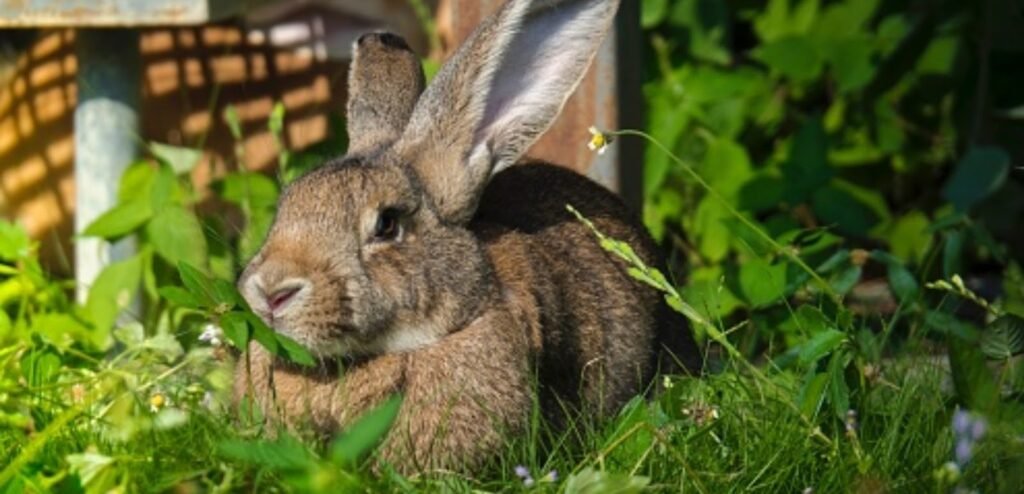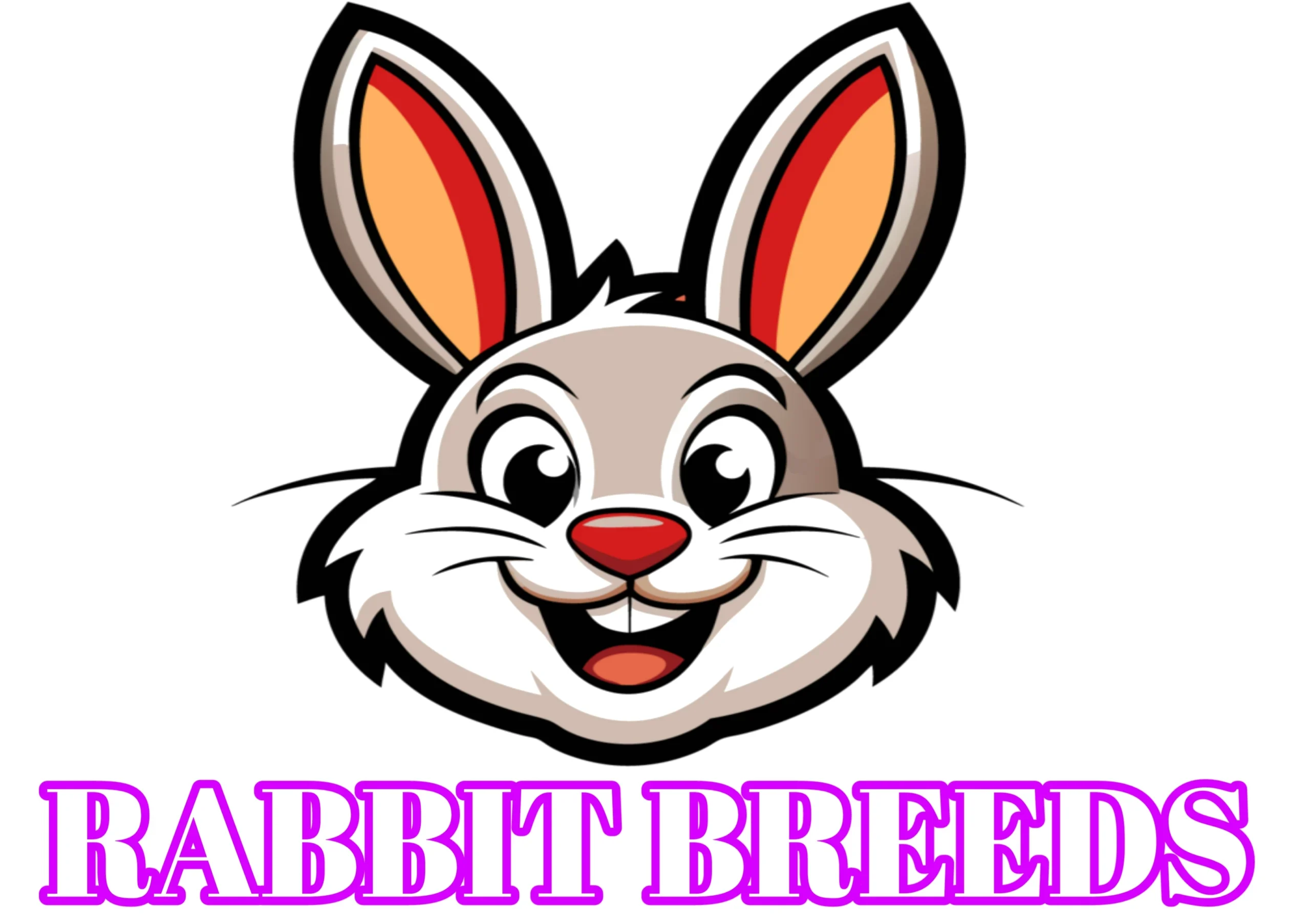American Flemish Giant Rabbit | Gentle, Massive Rabbit Breed
The American Flemish Giant Rabbit is one of the most popular and remarkable breeds in the world of domestic rabbits. Often referred to as the “Gentle Giant,” this breed is spectacular for its calm demeanor, friendlly nature, and enormous size. Originating in Belgium and later refined in the United States, the Flemish Giant has become a favorite of pet owners and rabbit breeders alike. Whether shown at rabbit exhibitions or leaping around a family home, the Flemish Giant is hard to miss. He is large in stature, weighing around thirty-two to sixty-three ounces, has a broad head, muscular build, and large expressive ears.

The exuberant size of these buns, often over twenty pounds, and imposong presence can sometimes be deceptive to us humans. But these rabbits are affectionate and incredibly docile and gentle in nature. GWI. (UEPD) Gentle with boundless inner energy, sweet and responsive, these rabbits enjoy the company of people and are social in nature; they tend to develop deep connections with thier human companions.
History of the American Flemish Giant Rabbit
Fur and meat where the primary occupation markets in Belgium in the 16th and 17th centuries with the Flemish Giant rabbit coming into the picture now and then. Breeders, specializing in rabbits, aimed at designing a rabbit that would grow quickly and was sturdy enough to supply nourished families with meat and fur for clothes or for trade. Their substantial body and muscle meat made them very prominent in Europes market.
Belgian breeders needed a faster and sturdier rabbit, hence cross breeding was supported. During the onset of the twentieth century, the cross breed found its way to the United States, amost doubling its population size. American breeders extensively bred the cross breed for their increased bone structure, temperment, and muscle control.
Consequently, the American variant of the breed became more amiable, ideal for family life and showcase competitions. The Flemish Giant has been recognized by the American Rabbit Breeders Association (ARBA) and is a frequent participant of rabbit shows all over the country. While still valued for its primary purposes, it is now more appreciated as a calm and gentle pet in family homes and among rabbit enthusiasts.
Classification of American Flemish Giant Rabbits
The American Flemish Giant Rabbit is usually classified in two predominant ways – by purpose and size, both factors contributing to its popularity. The American Flemish Giant Rabbit is classified based on its purpose and physical attributes. Initially bred for meat and fur due to its massive size and quality coat, it is now widely recognized as both a show animal and a family pet. In terms of size classification, it ranks among the largest rabbit breeds globally, often weighing between 13 to 20 pounds or more. These rabbits are also valued in breeding programs for enhancing size and temperament in other rabbit breeds.
By Purpose
The Giant Flemish has developed from a meat and fur rabbit into a multi-purpose breed. Currently, it is kept most commonly as a pet, show rabbit, and breeding stock. Its docile and tolerant demeanor makes it popular among rabbit enthusiasts and families alike. In commercial rabbit breeding programs, Flemish Giants are frequently used as breeders to improve the size and skeleton of dwarf breeds for better conformation and meat yield.
By Size
This breed’s enormous size sets it apart as one of the most remarkable classification factors. The average weight of an adult Flemish Giant is between 13 and 20 pounds, with some individuals exceeding 22 pounds. They can reach lengths of up to 2.5 feet, making them larger than many small dog breeds.
Compared to smaller rabbit breeds, Flemish rabbits need more spacious enclosures and careful consideration of spatial hygiene and enclosure safety. However, their size also makes them attractive, as they grab attention at exhibitions and serve as great conversation starters in homes.
Most Popular American Flemish Giant Rabbit Characteristics
The American Flemish Giant is loved for its combination of astounding size, grace, and pleasant temperament. Moreover, this breed has a Semi-arched body shape and broad head with strong hindquarters. Their erect ears that popularly measure up to 6 inches long are accompanied with large expressive eyes, enhancing their gentle robot-like appearance. According to ARBA, the breed has numerous recognized official color varieties: black, blue, fawn, light grey, steel grey, sandy and white, all covered in dense glossy fur that beautifies the rabbit.
Beyond these striking features, Flemish Giants are loved for their gentle disposition. They appear to enjoy the company of humans and are happy to be gently pet, and some are even trained to respond to basic commands. They are rather smart and surprisingly adaptable for their size. Many owners successfully train their Flemish Giants to use a litter box, enabling indoor housing when space permits.
Factors to Choose an American Flemish Giant Rabbit
It is a delightful experience to own an American Flemish Giant Rabbit, but they come with specifics that must be looked into well ahead of time. Let’s divide the major points into manageable sections as underpinning guidelines:
Space Requirements: Given their size, Flemish Giants demand ample space to move freely without restrictions. Custom-made cages or large indoor pens are essential – traditional rabbit cages are way too small. If they are kept outdoors, the bunnies need a secure and spacious hutch with a predator-proof safe run area. Their enclosure should also be kept clean and well-ventilated.
Diet and Nutrition: To maintain the health and weight of a Flemish Giant, a balanced diet is required. Meals should consist of high-quality timothy hay, fresh greens, and fiber-rich pellets. A little bit of fruit and treats can be provided on occasion, but must not be the highlight of the meal plan. Most importantly, the rabbits must have fresh and clean water. Because this breed tends to be larger, owners should expect higher feeding costs as these rabbits consume more than their smaller counterparts.
Social Needs and Enrichment: Flemish Giants are highly social animals, and daily interactions and mental stimulation is key for maintaining their optimal level of happiness. When a Flemish Giant is left alone too often, they may develop anxiety or destructive behaviors, making social interaction with family vital for their emotional health. In addition bumps and bruises are so easy to acquire, due to their size, so care must be taken when ‘carrying’ one around as the spine can be susceptible to injury if they are not supported optimally.
Grooming and Maintenance for Flemish Giants: Owing to the Flemish Giant Bunnies stature, strain and other mobility issues that arise tend to make them more vulnerable, therefore needing to monitor their weight, joints and muscle if providing dental care. Furthermore, grooming routine be it through varying vets as it is critical and needs to be set and adhered to as due to the shedding fur in is continual while shedding will benefit from even enabling brushing once a week.
Tips for Responsible American Flemish Ownership
Pets of dwarf and Flemish bunnies alike require care that is well planned far ahead in inform investment in time, this involves disciplined planning. Following necessitate aim of boundaries set below within each sub section helps to ease the entire bulldog region as well as aid within the entire outline.
Bottom of Space and Housing Guidelines for Each Flemmish: Use fence or even walls to enclose the animal enable practical cleaning, drastic hygiene, and escape proof measures to suit the needs of the rabbit’s residence. In addition place the need to having lowered soft and non slip mats while permitting easy access to the rubber tiles along with other fittings in order to reduce the likelihood of enhancing injury.
Children must be overseen while being interacted with. These rabbits require affection, thus they need to be interacted with, gently petted, and “cuddle sessions” added to regularly.
Exercise and Enrichment: Flemish Giants greatly benefit from daily “free-roam time” while being enclosed in a safe indoor or outdoor space. They can stretch, explore and hop around with a surprising amount of agility. Additive to mental and physical stimulation, use stuffed-hay boxes, tunnels, and toys for them to play with.
Health and Hygiene: Maintaining a monitorable weight is crucial along with checking teeth for overgrowth, giving monthly nail trims, and weighing constantly. If overfed or under-exercised, their large size can make them more prone to arthritis and digestive issues. Always looking for signs of lethargy or decreased appetite is also critical, as both may be indicative of underlying health issues.
Fun Facts About American Flemish Giant Rabbits
- Considered Gentle Giants, these are domesticated rabbits that are among the biggest ones in size, and most calm.
- They are non-aggressive and make for great family pets which is a huge bonus despite their size.
- Initially bred for their fur and meat, they are now mostly kept as pets and show animals.
- Use of thick shiny fur makes them very sought after in rabbit exhibitions and competitions.
- Flemish Giants are capable of learning: many can be encouraged to use a litter box and even recognize when they are called by name.
- With their powerful hind limbs, they can hop astonishing distances given sufficient space.
- They are recognized to form instinctive attachments to their handlers just like dogs and cats do.
- Because of their placid and comforting nature, several Flemish Giants have been recognized as therapy animals.

FAQs about American Flemish Giant Rabbits
Conclusion
Flemish Giant should be considered as one for people searching companionship. The breed has a fascinating story, starting in Belgium as a meat and fur producer and later becoming a household pet in America. Standing out for its sheer size, the breed feature a sweet temperament making it a “gentle giant”. As expected, rabbit lovers from around the world adore this breed for not just its distinct physical attributes but also its unwavering and gentle nature.
Rabbit that renders unforgettable companionship, Flemish Giant bear responsibility from the pet owner side such as proper maintenance, housing, balanced diet along with warmth. In return, the rabbit becomes an integrated part of the family. For people wishing to purchase a show-quality rabbit or simply an interesting pet, the American Flemish Giant is a fruitful option. This gentle giant along with his big personality will certainly fit right into the family.
